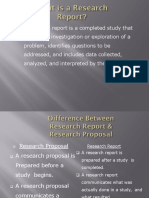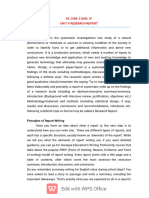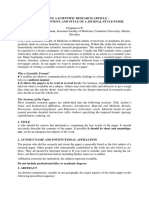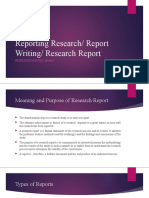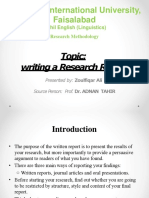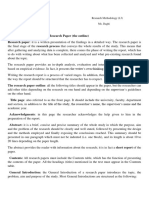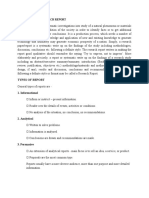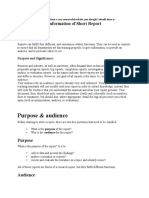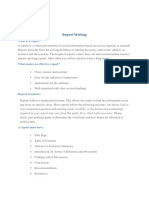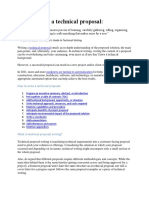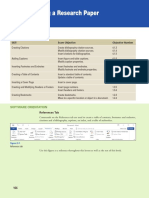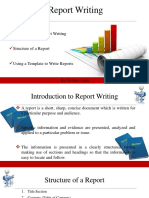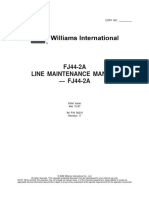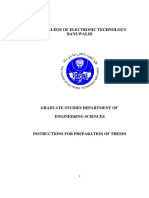0% found this document useful (0 votes)
55 views6 pagesSample Format of Report Writing
The document outlines general guidelines for writing a research report, emphasizing the structured presentation of research findings. It details the components of a report, including the preliminary, main body, and supplementary parts, along with specific sections such as the introduction, methodology, results, and conclusions. Additionally, it provides recommendations for report preparation, citation styles, and the importance of clarity and organization in research writing.
Uploaded by
prasaianish07Copyright
© © All Rights Reserved
We take content rights seriously. If you suspect this is your content, claim it here.
Available Formats
Download as DOCX, PDF, TXT or read online on Scribd
0% found this document useful (0 votes)
55 views6 pagesSample Format of Report Writing
The document outlines general guidelines for writing a research report, emphasizing the structured presentation of research findings. It details the components of a report, including the preliminary, main body, and supplementary parts, along with specific sections such as the introduction, methodology, results, and conclusions. Additionally, it provides recommendations for report preparation, citation styles, and the importance of clarity and organization in research writing.
Uploaded by
prasaianish07Copyright
© © All Rights Reserved
We take content rights seriously. If you suspect this is your content, claim it here.
Available Formats
Download as DOCX, PDF, TXT or read online on Scribd
/ 6



